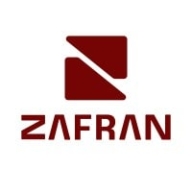


Lacework FortiCNAPP and Amazon Inspector compete in the cloud security and compliance category. Lacework appears to have the upper hand in complex environments due to its comprehensive features and ease of use.
Features: Lacework FortiCNAPP is known for anomaly detection, security compliance, and ease of use. Its strengths lie in extensive compliance support and insights, prioritizing alerts based on severity, which aids in large-scale security monitoring. Amazon Inspector provides automated vulnerability assessments, focusing on EC2 instances and container images, offering a consolidated view. It is efficient but limited to certain AWS services.
Room for Improvement: Lacework FortiCNAPP could enhance integration with IAM security control, data visibility, and the configuration of alerts. Improved communication on updates and more intuitive reporting are needed. Its limitations in FedRAMP authorization affect government use cases. Amazon Inspector requires more granular control over custom vulnerabilities, better automation, and enhanced integration with more AWS services. The absence of real-time protection and agent dependency are challenges.
Ease of Deployment and Customer Service: Both have strong cloud support. Lacework FortiCNAPP is praised for its responsive support team and proactive customer service, offering frequent updates and engagement through Slack. Amazon Inspector provides adequate support but with less frequent interaction, minimum initial setup assistance, and remains less engaged post-deployment. Lacework stands out with its high-touch customer service experience.
Pricing and ROI: Lacework's pricing is substantial yet justified by its coverage and integration, providing a good ROI via reduced monitoring efforts and alert handling automation. Although expensive, its value in automation outweighs costs. Amazon Inspector offers transparent tiered pricing, generally affordable, charging per usage with significant increases for extensive accounts. It remains cheaper, but the perceived ROI is less compared to Lacework's functionality, highlighting Lacework's efficiency in eliminating manual labor.



Zafran Security integrates with existing security tools to identify and mitigate vulnerabilities effectively, proving that most critical vulnerabilities are not exploitable, optimizing threat management.
Zafran Security introduces an innovative operating model for managing security threats and vulnerabilities. By leveraging the threat exposure management platform, it pinpoints and prioritizes exploitable vulnerabilities, reducing risk through immediate remediation. This platform enhances your hybrid cloud security by normalizing vulnerability signals and integrating specific IT context data, such as CVE runtime presence and internet asset reachability, into its analysis. No longer reliant on patch windows, Zafran Security allows you to manage risks actively.
What are the key features of Zafran Security?
What benefits can users expect from Zafran Security?
In industries where security is paramount, such as finance and healthcare, Zafran Security provides invaluable protection by ensuring that only exploitable vulnerabilities are addressed. It allows entities to maintain robust security measures while allocating resources efficiently, fitting seamlessly into existing security strategies.
Amazon Inspector is an automated security assessment service that helps improve the security and compliance of applications deployed on AWS. Amazon Inspector automatically assesses applications for exposure, vulnerabilities, and deviations from best practices. After performing an assessment, Amazon Inspector produces a detailed list of security findings prioritized by level of severity. These findings can be reviewed directly or as part of detailed assessment reports which are available via the Amazon Inspector console or API.
Amazon Inspector security assessments help you check for unintended network accessibility of your Amazon EC2 instances and for vulnerabilities on those EC2 instances. Amazon Inspector assessments are offered to you as pre-defined rules packages mapped to common security best practices and vulnerability definitions. Examples of built-in rules include checking for access to your EC2 instances from the internet, remote root login being enabled, or vulnerable software versions installed. These rules are regularly updated by AWS security researchers.
Lacework FortiCNAPP provides robust cloud security, combining vulnerability management and multi-cloud insight with user-friendly controls, machine learning detection, and compliance support.
Lacework FortiCNAPP specializes in cloud security by merging machine learning anomaly detection with agent-based vulnerability management to offer detailed alerts and compliance reports. Its comprehensive approach allows continuous monitoring across AWS and Kubernetes, providing insights from an attacker's perspective. The platform offers automation and seamless Slack integration, facilitating collaborative and efficient cloud security management. Users value its ability to handle multi-cloud environments and scan IAC scripts, configurations, and compute nodes across AWS and GCP.
What are the key features?Organizations across sectors leverage Lacework FortiCNAPP for cloud security, focusing on compliance, security posture, and vulnerability management. It is widely used for monitoring AWS and Kubernetes environments, scanning IAC scripts, configurations, and securing compute nodes. It supports multi-cloud security posture management and log ingestion, enabling companies to maintain strong cloud infrastructures without dedicated security layers.
We monitor all Vulnerability Management reviews to prevent fraudulent reviews and keep review quality high. We do not post reviews by company employees or direct competitors. We validate each review for authenticity via cross-reference with LinkedIn, and personal follow-up with the reviewer when necessary.